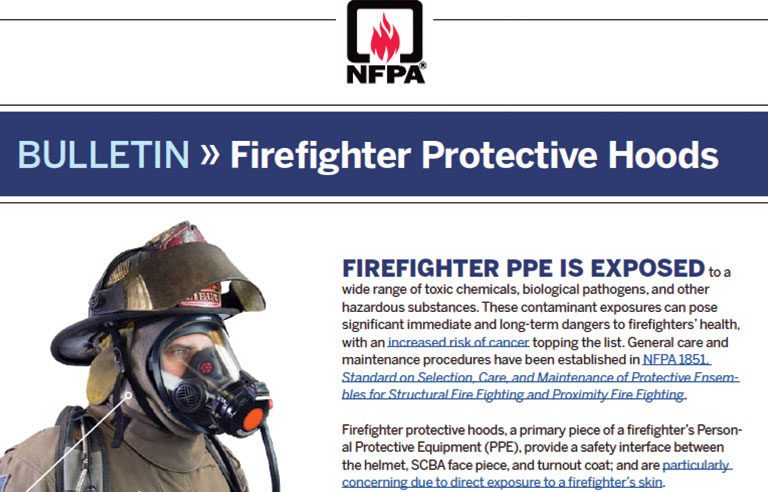Protective hoods leave firefighters’ heads, necks vulnerable to toxins, NFPA warns

Photo: National Fire Protection Association
Quincy, MA – Toxins present on the protective hoods used by firefighters may carry dangerous consequences for crews.
A recent safety bulletin published by the National Fire Protection Association stresses that “contaminant exposures can pose significant immediate and long-term dangers to firefighters’ health,” which includes an increased risk of cancer, according to a NIOSH study published in July 2016.
Although personal protective equipment for firefighters provides a valuable safeguard, particular concern stems from the hood’s direct exposure to the skin, the bulletin states. The face and neck are known as significant exposure areas to harmful products. A Jan. 27 press release calls firefighter protective hoods “the most penetrable piece of equipment.”
The bulletin recommends fire organizations follow these upkeep guidelines, in compliance with NFPA 1851:
- Wash protective hoods after every fire or emergency service use.
- Inspect hoods for damage and continued serviceability after each use.
- Do not wash hoods at home, a laundromat or a dry cleaner.
“NFPA has had the back of firefighters for more than 120 years,” Ed Conlin, NFPA division manager of public fire protection, said in the release. “Given the increase in occupational cancer incidents in the fire service, we feel it is best to err on the side of caution as we await additional scientific research on PPE and learn more about the absorption of carcinogens near the forehead, jaw, neck and throat.”
Post a comment to this article
Safety+Health welcomes comments that promote respectful dialogue. Please stay on topic. Comments that contain personal attacks, profanity or abusive language – or those aggressively promoting products or services – will be removed. We reserve the right to determine which comments violate our comment policy. (Anonymous comments are welcome; merely skip the “name” field in the comment box. An email address is required but will not be included with your comment.)

